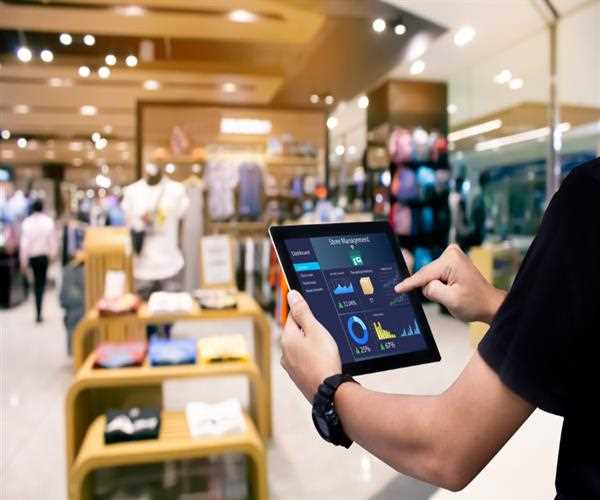Search here

11-Aug-2023 , Updated on 8/11/2023 11:39:24 PM
Human Centric IoT Design- Ensuring user friendly and inclusive connected devices
Highlights
- User-Centric Approach- Human-Centric IoT layout prioritizes the wishes and options of users, aiming to create linked gadgets that seamlessly integrate into customers' lives.
- Inclusivity- Designing IoT devices with inclusivity in mind ensures that people of all abilities and backgrounds can have interaction with and gain from those technologies.
- Simplicity and Intuitiveness- IoT devices ought to have intuitive interfaces and simple setup procedures to decrease user frustration and technical boundaries.
- Personalization- Allowing customers to personalize settings and functionalities of IoT devices enhances their feel of ownership and control.
- Privacy and Security- Prioritizing consumer information protection and device protection is vital to construct consider and save you unauthorized get entry to or information breaches.
- Interoperability- Designing IoT gadgets to work seamlessly with different devices and structures encourages a extra cohesive and great customer experience.
The rise of the Internet of Things (IoT) has transformed how we engage with technology. The integration of objects and devices, into a network has brought about unprecedented convenience and effectiveness. From thermostats that regulate home temperatures to fitness trackers that monitor our well being IoT devices have become an essential part of modern living. However as the IoT landscape continues to expand the significance of designing with humans in mind becomes increasingly evident. Let's explore the concept of IoT design, its importance in creating user friendly and inclusive connected devices, as well as the challenges and strategies involved in its implementation.
Grasping Human Centric IoT Design
Human centric design also referred to as user centered design centers around developing products and systems that prioritize users needs, preferences and experiences. This approach considers factors like usability, accessibility, aesthetics and emotional connection. When applied to the world of aims to ensure that connected devices enhance users lives without burdening them with complexities or obstacles.
IoT devices hold potential, for increasing efficiency and convenience across domains.

However, in order to truly reap the benefits it is crucial to prioritize the needs of the end users during the design of these devices. A user focused approach to IoT design aims at integrating technology into users lives making it easier for them to interact with these devices without facing steep learning curves or overwhelming cognitive demands.
The Importance of User Friendly IoT Devices
User devices play a pivotal role in determining the success and widespread adoption of IoT technology. When a device is intuitive and user friendly it encourages users to embrace it resulting in increased user engagement and satisfaction. Conversely designed devices with interfaces can lead to frustration, abandonment and negative perceptions towards IoT technology as a whole.
Lets consider an example scenario where various smart home devices like lights thermostats and security cameras are interconnected within an ecosystem. A user friendly design would enable homeowners to control and customize these devices through an interface. This eliminates the need for users to navigate through apps or devices streamlining their experience and enhancing the usefulness of the IoT ecosystem.
Inclusivity and Accessibility in IoT Design
Inclusivity forms a foundation, for centric IoT design. During the design process it is crucial to consider the range of users who will interact with these devices.
This encompasses individuals who have disabilities, varying levels of proficiency and diverse cultural backgrounds. Accessibility features like voice commands, screen readers and, tactile interfaces ensure that IoT devices can be accessed by everyone irrespective of their abilities.
Moreover it is crucial for devices to prioritize users privacy and data security. Incorporating security measures and transparent data practices into the design of these devices is essential for establishing trust among users. The ethical and responsible collection and processing of user data should be a part of the design process.
There are challenges involved in creating user IoT devices that are user friendly and inclusive. One significant challenge is finding the balance between functionality and simplicity. While IoT devices offer a range of features overwhelming users with many options on the interface can be counterproductive. Designers must carefully prioritize features based on user needs and expectations.
Another challenge lies in achieving interoperability among devices from manufacturers to provide a seamless experience. This requires communication protocols well as collaboration among industry players to ensure that devices can communicate effectively within a connected environment.
To achieve centric IoT design conducting extensive research is crucial, in understanding user needs, preferences and pain points.
This understanding will serve as a guiding principle during the design process and aid, in the development of devices that truly resonate with users.
- Simplicity- Simplify the user interface. Remove complexity. Prioritize features and functions while offering options as secondary choices.
- Accessibility- Incorporate accessibility features from the beginning. Test devices with users of abilities to ensure usability for everyone.
- Privacy and Security-; Integrate data security and privacy into the design process. Implement encryption, authentication and transparent data practices.
- Feedback Loops- Establish mechanisms for users to provide feedback allowing for design improvements based on their suggestions. This ongoing enhancement process enhances the devices usability over time.
- Interoperability- Collaborate with manufacturers of devices to establish communication standards facilitating seamless integration between different devices.
Designing devices with a focus on needs is crucial in shaping the future of connected technology. As IoT becomes more integrated, into our lives prioritizing user interfaces, accessibility and security is of utmost importance. By emphasizing ease of use, inclusivity and a seamless experience designers can create devices that empower users enrich their lives and contribute to an interconnected and technologically advanced society.
As the Internet of Things (IoT) continues to progress the concepts of designing with humans in mind will continue to play a role, in shaping a future that prioritizes user needs and inclusivity.
SEO and Content Writer
I am Drishan vig. I used to write blogs, articles, and stories in a way that entices the audience. I assure you that consistency, style, and tone must be met while writing the content. Working with the clients like bfc, varthana, ITC hotels, indusind, mumpa, mollydolly etc. has made me realized that writing content is not enough but doing seo is the first thing for it.
Join Our Newsletter
Subscribe to our newsletter to receive emails about new views posts, releases and updates.
Copyright 2010 - 2025 MindStick Software Pvt. Ltd. All Rights Reserved Privacy Policy | Terms & Conditions | Cookie Policy